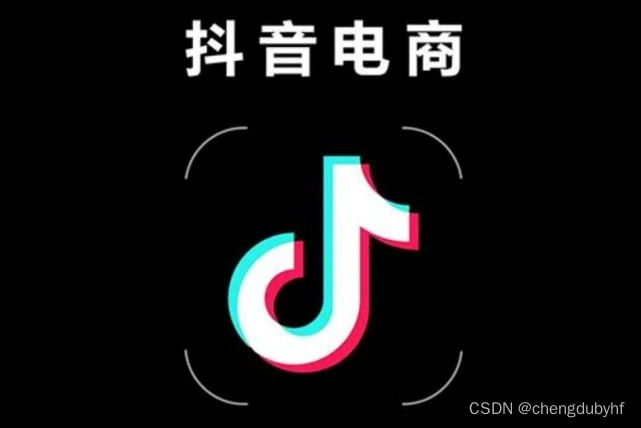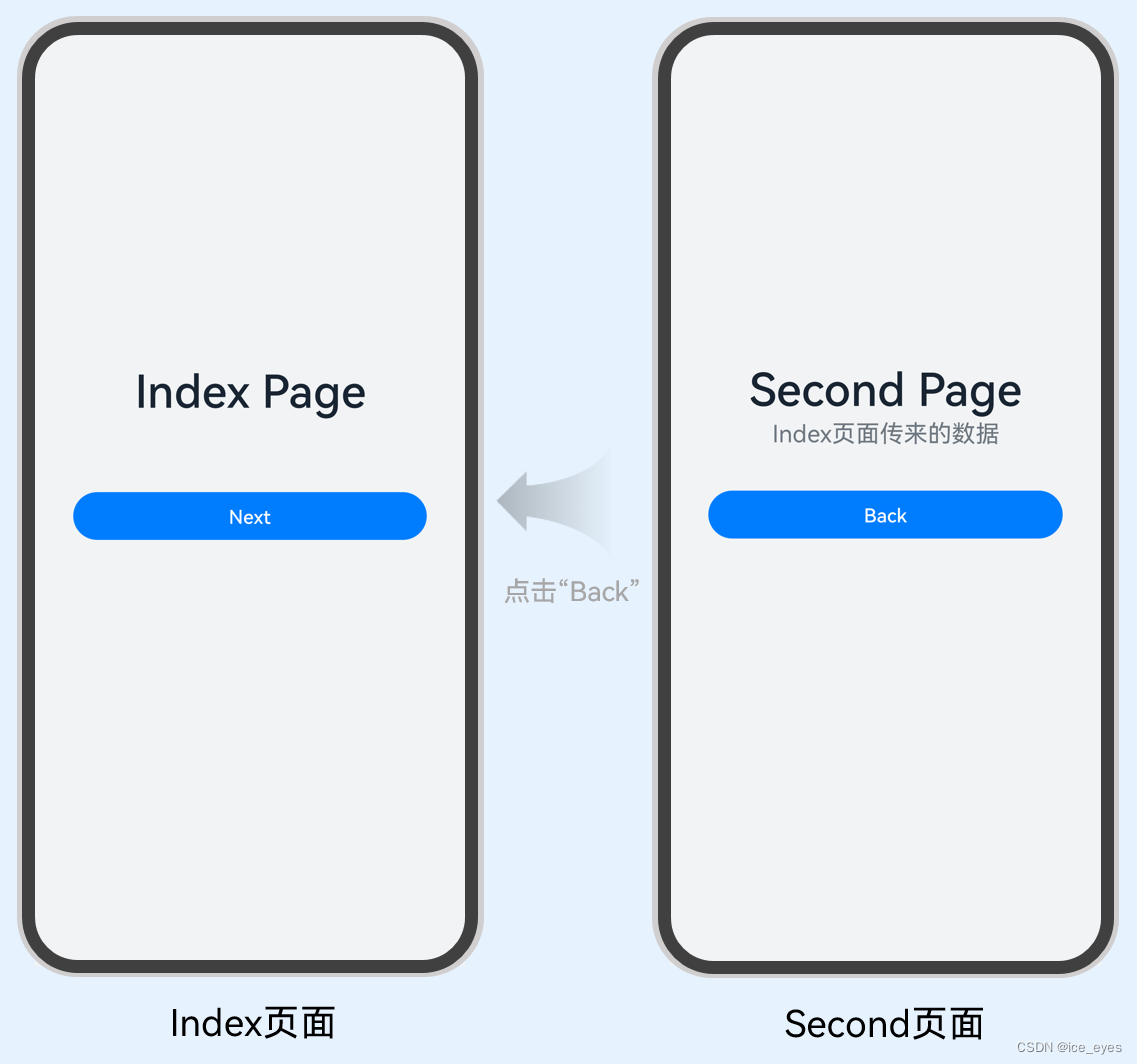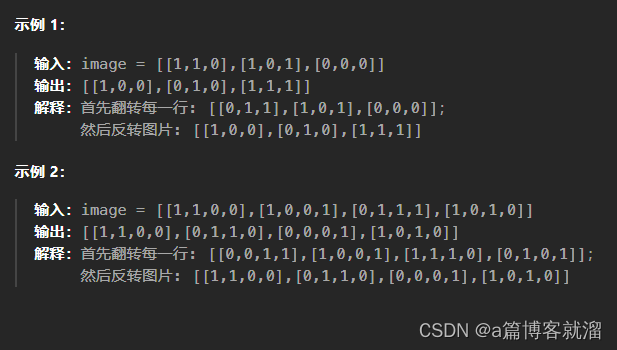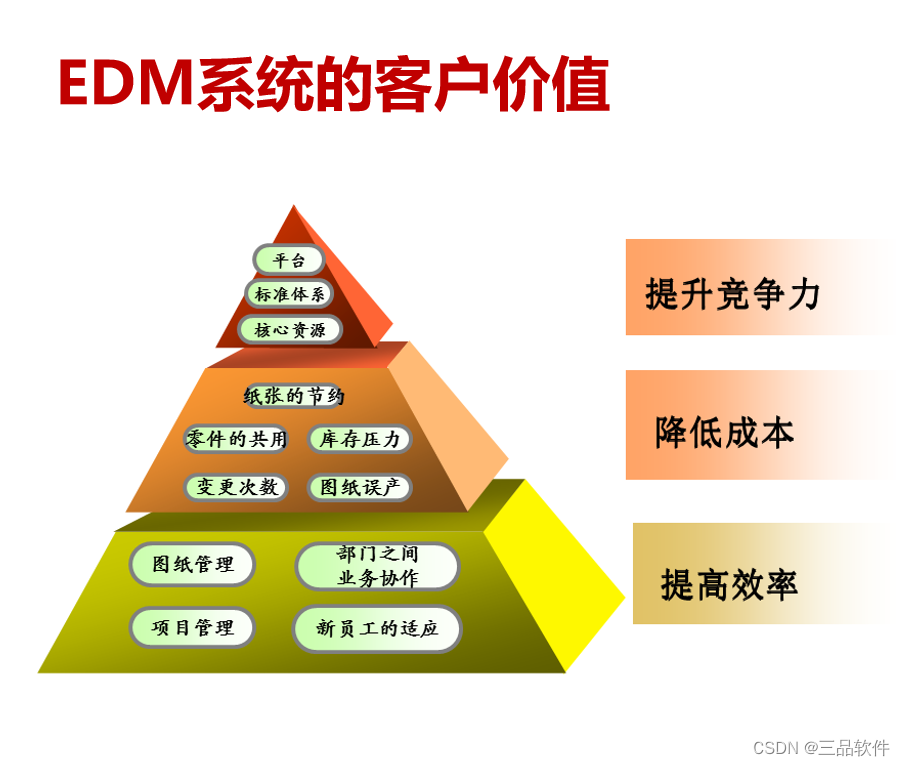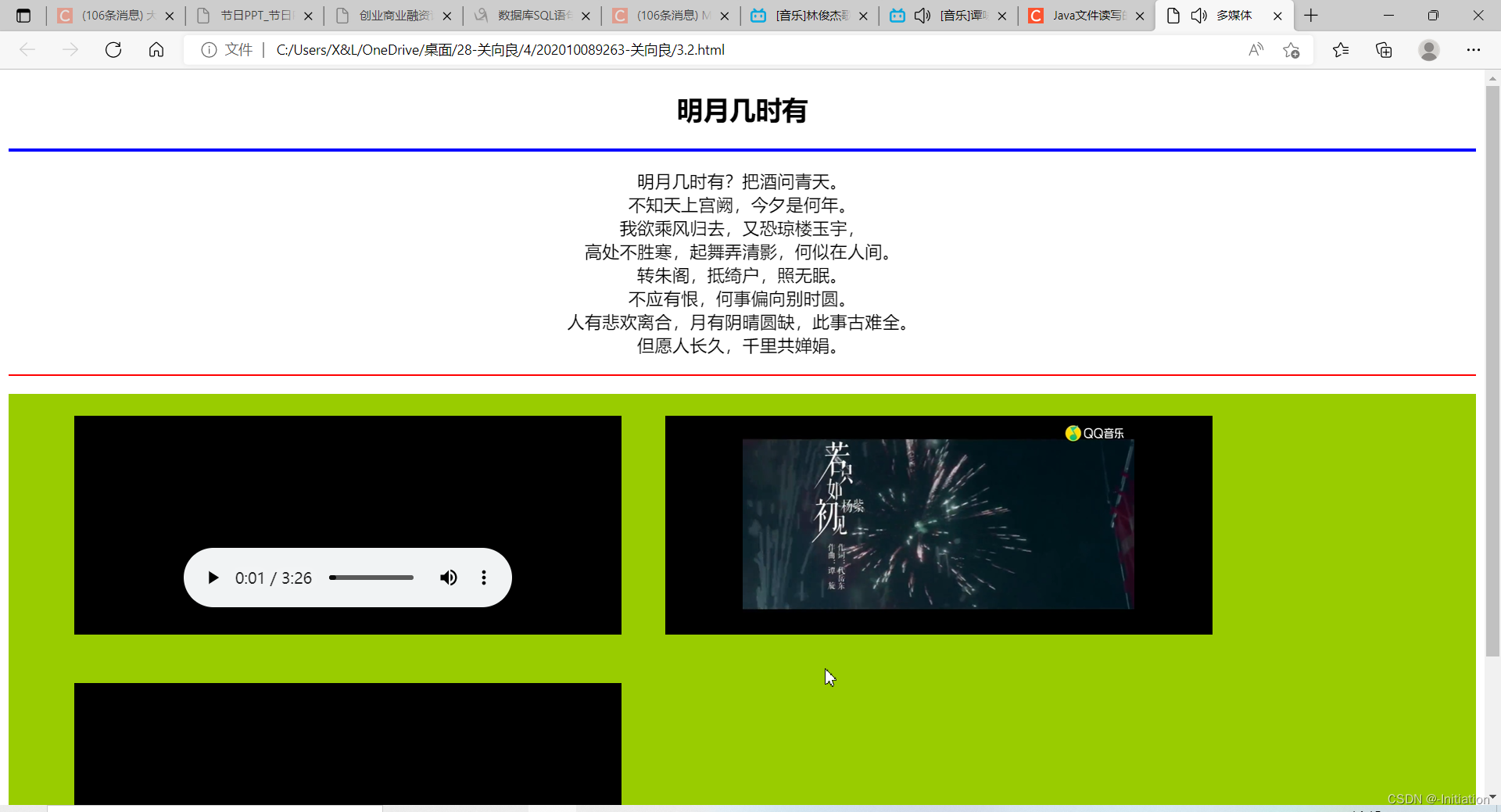在早些年学习Android的时候,对Service有过总结,但是主要是如何去使用,注意事项,startService和bindService的区别。
Android Service_public int onstartcommand(intent intent, int flags-CSDN博客
但是今天从源码来总结下framework层的启动流程大致是什么样的。
一、startService()
平时,在我们的activity里,我们通过startService去启动一个service服务。
1.context.startService
使用例子:
//testActivity
@Override
public void onClick(View v) {
Intent it=new Intent(this, SimpleService.class);
switch (v.getId()){
case R.id.startService:
startService(it);
break;
case R.id.stopService:
stopService(it);
break;
}
这儿,实际上是调用的context上下文去调用的这个方法,那我们去看下里面的代码
@Override
public ComponentName startService(Intent service) {
warnIfCallingFromSystemProcess();
return startServiceCommon(service, false, mUser);
}
private ComponentName startServiceCommon(Intent service, boolean requireForeground,
UserHandle user) {
try {
validateServiceIntent(service);
service.prepareToLeaveProcess(this);
ComponentName cn = ActivityManager.getService().startService(
mMainThread.getApplicationThread(), service, service.resolveTypeIfNeeded(
getContentResolver()), requireForeground,
getOpPackageName(), user.getIdentifier());
...
return cn;
} catch (RemoteException e) {
throw e.rethrowFromSystemServer();
}
}2.ActivityManager.getService().startService()
可以看到:核心代码为ActivityManager.getService().startService()
在 Activity 中使用的 startService 方法是定义在 Context 的抽象类中,它的真正实现类是 ContextImpl,所以先进入 ContextImpl 类。先从startService开始,然后进入本类的startServiceCommon方法,并最终调用ActivityManagerNative.getDefault()对象的 startService 方法。ActivityManager.getService()获取到IActivityManager对象,并且是通过单利模式创建的。
public static IActivityManager getService() {
return IActivityManagerSingleton.get();
}
private static final Singleton<IActivityManager> IActivityManagerSingleton =
new Singleton<IActivityManager>() {
@Override
protected IActivityManager create() {
final IBinder b = ServiceManager.getService(Context.ACTIVITY_SERVICE);
final IActivityManager am = IActivityManager.Stub.asInterface(b);
return am;
}
};看下ActivityManager.getService()这个如果看过app启动流程就知道,这玩意儿在创建application和activity时也看到过。这儿用到了binder实现进程间通信,最后走到了AMS里面
看下ActivityManagerService中startService()代码

这里面走到了startServiceLocked()方法,其中mServices是ActiveServices。
ActiveServices这里面进行了以下步骤:
1.通过 retrieveServiceLocked 方法来解析 service 这个 Intent,就是解析前面我们在 AndroidManifest.xml 定义的 Service 标签的 intent-filter 相关内容,然后将解析结果放在 res.record 中。
2.调用 startServiceInnerLocked 方法。

在startServiceInnerLocked 方法中会调用 bringUpServiceLocked 方法。

3.bringUpServiceLocked方法中,当 Service 所在的进程存在时,将调用realStartServiceLocked 方法来启动 Service,否则的话调用 startProcessLocked 方法来启动新进程。
情况一:realStartServiceLocked()

这里面会调用 app.thread.scheduleCreateService(r, r.serviceInfo, mAm.compatibilityInfoForPackageLocked(r.serviceInfo.applicationInfo), app.repProcState);
这里会走到ApplicationThread去sendMessage,最后去创建service,执行onCreate方法,后面有详细说明。因为它运行的进程已存在,就直接去创建了,如果不存在,接着往下走
情况二:startProcessLocked()
 4.startProcessLocked()是ActivityManagerSevice中的方法,
4.startProcessLocked()是ActivityManagerSevice中的方法,
//在ActivityManagerService类中
private final void startProcessLocked(ProcessRecord app, String hostingType,
String hostingNameStr, String abiOverride, String entryPoint, String[] entryPointArgs) {
boolean isActivityProcess = (entryPoint == null);
if (entryPoint == null)
entryPoint = "android.app.ActivityThread";
checkTime(startTime, "startProcess: asking zygote to start proc");
//通过 processName,uid 等启动新进程
Process.start(entryPoint,
app.processName, uid, uid, gids, debugFlags, mountExternal,
app.info.targetSdkVersion, app.info.seinfo, requiredAbi,
instructionSet, app.info.dataDir, entryPointArgs);
}
//在Process类中
public static final ProcessStartResult start(final String processClass,
final String niceName,
int uid, int gid, int[] gids,
int debugFlags, int mountExternal,
int targetSdkVersion,
String seInfo,
String abi,
String instructionSet,
String appDataDir,
String invokeWith,
String[] zygoteArgs) {
return zygoteProcess.start(processClass, niceName, uid, gid, gids,
debugFlags, mountExternal, targetSdkVersion, seInfo,
abi, instructionSet, appDataDir, invokeWith, zygoteArgs);
}从这儿,启动了一个新的进程,创建一个新的进程过后就会走到熟悉的ActivityThread类的main方法里面去
3.启动新进程去ActivityThread
熟悉的源码
public static void main(String[] args) {
Trace.traceBegin(Trace.TRACE_TAG_ACTIVITY_MANAGER, "ActivityThreadMain");
CloseGuard.setEnabled(false);
// 初始化应用中需要使用的系统路径
Environment.initForCurrentUser();
Looper.prepareMainLooper();
//创建ActivityThread 对象
ActivityThread thread = new ActivityThread();
thread.attach(false);
Looper.loop();
throw new RuntimeException("Main thread loop unexpectedly exited");
}大致流程:
- 1.绑定应用进程到ActivityManagerService
- 在 Android 应用程序中,每一个进程对应一个 ActivityThread 实例,然后这里创建了 ActivityThread 对象并调用了其 attach 方法
- 2.主线程Handler消息处理
- 启动looper轮询器,所以在activity或者service创建handler对象时,不需要手动调用looper。原因就是在这里
- 首先Looper.prepareMainLooper();是为主线程创建了Looper,然后thread.getHandler();是保存了主线程的Handler,最后Looper.loop();进入消息循环。
其余的不用看了,主要看thread.attach(false)
- main()方法通过thread.attach(false)绑定应用进程。ActivityManagerNative通过getDefault()方法返回ActivityManagerService实例,ActivityManagerService通过attachApplication将ApplicationThread对象绑定到ActivityManagerService,而ApplicationThread作为Binder实现ActivityManagerService对应用进程的通信和控制。
- 在ActivityManagerService内部,attachApplication实际是通过调用attachApplicationLocked实现的,这里采用了synchronized关键字保证同步。
//ActivityThread.java
private void attach(boolean system) {
final IActivityManager mgr = ActivityManagerNative.getDefault();
try {
//这里调用了 ActivityManagerProxy.attachApplication 方法。
mgr.attachApplication(mAppThread);
} catch (RemoteException ex) {
// Ignore
}
}
//ActivityManagerService.java 然后看看attachApplication方法
@Override
public final void attachApplication(IApplicationThread thread) {
synchronized (this) {
int callingPid = Binder.getCallingPid();
final long origId = Binder.clearCallingIdentity();
attachApplicationLocked(thread, callingPid);
Binder.restoreCallingIdentity(origId);
}
}往里面走,里面的代码很多,这儿根据我看过的源码,分为三个方向
1.关于application,他会走到 thread.bindApplication去绑定application,执行后续操作(创建application,执行onCreate生命周期)
2.关于activity,他会走到mStackSupervisor.attachApplicationLocked(app)执行有关activity的操作(走到scheduleLaunchActivity)
上面两个步骤,具体可看我之前的博客 Android App启动流程和源码详解-CSDN博客
3.关于service,他会走到 didSomething |= mServices.attachApplicationLocked(app, processName);执行service的后续操作。
关键代码:
private final boolean attachApplicationLocked(IApplicationThread thread,int pid) {
if (app.instr != null) {//app的
thread.bindApplication(processName, appInfo, providers,
app.instr.mClass,
profilerInfo, app.instr.mArguments,
app.instr.mWatcher,
app.instr.mUiAutomationConnection, testMode,
mBinderTransactionTrackingEnabled, enableTrackAllocation,
isRestrictedBackupMode || !normalMode, app.persistent,
new Configuration(getGlobalConfiguration()), app.compat,
getCommonServicesLocked(app.isolated),
mCoreSettingsObserver.getCoreSettingsLocked(),
buildSerial);
} else {
thread.bindApplication(processName, appInfo, providers, null, profilerInfo,
null, null, null, testMode,
mBinderTransactionTrackingEnabled, enableTrackAllocation,
isRestrictedBackupMode || !normalMode, app.persistent,
new Configuration(getGlobalConfiguration()), app.compat,
getCommonServicesLocked(app.isolated),
mCoreSettingsObserver.getCoreSettingsLocked(),
buildSerial);
}
// See if the top visible activity is waiting to run in this process...
if (normalMode) {
try {//activity的
if (mStackSupervisor.attachApplicationLocked(app)) {
didSomething = true;
}
} catch (Exception e) {
Slog.wtf(TAG, "Exception thrown launching activities in " + app, e);
badApp = true;
}
}
// Find any services that should be running in this process...
if (!badApp) {
try {//sevice的
didSomething |= mServices.attachApplicationLocked(app, processName);
checkTime(startTime, "attachApplicationLocked: after mServices.attachApplicationLocked");
} catch (Exception e) {
Slog.wtf(TAG, "Exception thrown starting services in " + app, e);
badApp = true;
}
}
}上面第三步,mServices.attachApplicationLocked看源码,会走到app.thread.scheduleCreateService(r, r.serviceInfo, mAm.compatibilityInfoForPackageLocked(r.serviceInfo.applicationInfo), app.repProcState);方法,哎,你看他又回去了,走到了ApplicationThread里去了,ApplicationThread是Activity的内部类(上面不创建进程也是调用的词方法),我们点进去看下源码:
public final void scheduleCreateService(IBinder token, ServiceInfo info,
CompatibilityInfo compatInfo, int processState) {
updateProcessState(processState, false);
CreateServiceData s = new CreateServiceData();
s.token = token;
s.info = info;
s.compatInfo = compatInfo;
sendMessage(H.CREATE_SERVICE, s);
}哎哟喂,殊途同归啊,和application和activity一样,最后都用到了用handler去处理消息。
来嘛,看下handler的handleMessage()方法
...
case CREATE_SERVICE:
Trace.traceBegin(Trace.TRACE_TAG_ACTIVITY_MANAGER, ("serviceCreate: " + String.valueOf(msg.obj)));
handleCreateService((CreateServiceData)msg.obj);
Trace.traceEnd(Trace.TRACE_TAG_ACTIVITY_MANAGER);
break;
...继续往里走:handleCreateService((CreateServiceData)msg.obj);
1.通过类加载器 ClassLoader 来加载 Service 对象
2.创建一个 ContextImpl 对象,每个 Activity 和 Service 都有一个 Context 对象。
private void handleCreateService(CreateServiceData data) {
Service service = null;
try {
//(1)通过类加载器来加载 Service 对象
java.lang.ClassLoader cl = packageInfo.getClassLoader();
service = (Service) cl.loadClass(data.info.name).newInstance();
} catch (Exception e) {
//......
}
//(2)这里创建 ContextImpl 对象
ContextImpl context = ContextImpl.createAppContext(this, packageInfo);
context.setOuterContext(service);
Application app = packageInfo.makeApplication(false, mInstrumentation);
service.attach(context, this, data.info.name, data.token, app,ActivityManagerNative.getDefault());
//(3)这里调用 Service 的 onCreate 方法
service.onCreate();
mServices.put(data.token, service);
}哎,这不就来了吗,最后执行了service的onCreate()生命周期。
二、bindService()
1.ContextImpl类中bindService()
具体使用:
TestActivity.java
private void test(){
Intent intent = new Intent(this, XXXService.class);
// bindService 的具体实现在 ContextImpl
// BIND_AUTO_CREATE 参数具体使用的代码 ActivityServices
bindService(intent, conn, BIND_AUTO_CREATE);
}
private ServiceConnection conn = new ServiceConnection() {
@Override
public void onServiceConnected(ComponentName name, IBinder service) {
// 绑定成功
}
@Override
public void onServiceDisconnected(ComponentName name) {
// 绑定结束
}
}bindService源码:
@Override
public boolean bindService(Intent service, ServiceConnection conn,
int flags) {
// mMainThread.getHandler(),传入的 handle 是主线程的 Handle
return bindServiceCommon(service, conn, flags, mMainThread.getHandler(),
Process.myUserHandle());
}
private boolean bindServiceCommon(Intent service, ServiceConnection conn,
int flags, Handler handler, UserHandle user) {
IServiceConnection sd;
if (mPackageInfo != null) {
// 1,将传入的 ServiceConnection 转化为 IServiceConnection 返回
// mPackgeInfo 是 LoadedApk
sd = mPackageInfo.getServiceDispatcher(conn, getOuterContext(), handler, flags);
}
validateServiceIntent(service);
try {
IBinder token = getActivityToken();
...
// 2,Binder 调用 AMS 的 bindService 方法,下面具体分析
int res = ActivityManagerNative.getDefault().bindService(
mMainThread.getApplicationThread(), getActivityToken(), service,
service.resolveTypeIfNeeded(getContentResolver()),
sd, flags, getOpPackageName(), user.getIdentifier());
return res != 0;
}
//...
}getServiceDispatcher方法
public final IServiceConnection getServiceDispatcher(ServiceConnection c,
Context context, Handler handler, int flags) {
synchronized (mServices) {
LoadedApk.ServiceDispatcher sd = null;
// private final ArrayMap<Context,
// ArrayMap<ServiceConnection, LoadedApk.ServiceDispatcher>> mServices
// 根据当前的 Context 获取 ArrayMap<ServiceConnection, LoadedApk.ServiceDispatcher>
ArrayMap<ServiceConnection, LoadedApk.ServiceDispatcher> map = mServices.get(context);
if (map != null) {
// 如果存在,尝试根据当前的 ServiceConnection 获取 ServiceDispatcher
sd = map.get(c);
}
if (sd == null) {
// 如果与 ServiceConnection 对应的 ServiceDispatcher 不存在,创建一个保存了当前
// ServiceConnection 的 ServiceDispatcher 对象,
// 并将之前传入的主线的 Handle 保存,同时创建一个 InnerConnection 对象保存
sd = new ServiceDispatcher(c, context, handler, flags);
if (map == null) {
map = new ArrayMap<ServiceConnection, LoadedApk.ServiceDispatcher>();
mServices.put(context, map);
}
// 将该 ServiceConnection 与 ServiceDispatcher 关系保存
map.put(c, sd);
} else {
// 如果最开始就获取到 ServiceDispatcher,比如多次 bindService,
// 就会调用 ServiceDispatcher 的 validate 判断此次 bindService 是否合法
// validate 的判断逻辑比较简单:
// 1.判断当前的 context 是否和之前 bindService 的一样
// 2.判断当前 handler 是否是主线程的 handle
// 以上两个条件都满足的情况下正常执行,反之抛出相应的异常
sd.validate(context, handler);
}
return sd.getIServiceConnection();
}
}主要看ActivityManagerService.bindService()
2.ActivityManagerService.bindService()
public int bindService(IApplicationThread caller, IBinder token, Intent service,
String resolvedType, IServiceConnection connection,
int flags, String callingPackage, int userId) throws TransactionTooLargeException {
//...
synchronized(this) {
// 调用 ActiveServices 的 bindServiceLocked 方法
return mServices.bindServiceLocked(caller, token, service,
resolvedType, connection, flags, callingPackage, userId);
}
}看到这里面调用了ActiveServices 的 bindServiceLocked,往里走:这里面代码长,但是主要调用是这样的:ActiveServices.bindServiceLocked() -> bringUpServiceLocked() -> realStartServiceLocked()
看realStartServiceLocked方法,刚才在我们startService的时候也调用了这个方法,但是因为它是bind的,所以有些许不同
private final void realStartServiceLocked(ServiceRecord r, ProcessRecord app,
boolean execInFg) throws RemoteException {
//...
try {
// 第一步,调用 ApplicationThread 的 scheduleCreateService 方法,
// 之后会实例化 Service 并调用 Service 的 onCreate 方法,这里的过程跟上面 startService 中一样。
// 不会调用 onStartCommand
app.thread.scheduleCreateService(r, r.serviceInfo,
mAm.compatibilityInfoForPackageLocked(r.serviceInfo.applicationInfo),
app.repProcState);
}
//...
// 第二步,调用 requestServiceBindingLocked
requestServiceBindingLocked(r, execInFg);
updateServiceClientActivitiesLocked(app, null, true);
// 第三步
// If the service is in the started state, and there are no
// pending arguments, then fake up one so its onStartCommand() will
// be called.
if (r.startRequested && r.callStart && r.pendingStarts.size() == 0) {
r.pendingStarts.add(new ServiceRecord.StartItem(r, false,
r.makeNextStartId(), null, null));
}
// StartItem 的 taskRemoved 如果是 false 的话,
// 调用下面方法会调用 Service 的 onStartCommand
sendServiceArgsLocked(r, execInFg, true);
}
private final boolean requestServiceBindingLocked(ServiceRecord r,
IntentBindRecord i, boolean execInFg, boolean rebind)
throws TransactionTooLargeException {
if ((!i.requested || rebind) && i.apps.size() > 0) {
try {
// 调用 ApplicationThread 的 scheduleBindService 方法
r.app.thread.scheduleBindService(r, i.intent.getIntent(), rebind,
r.app.repProcState);
}
}
return true;
}3.ApplicationThread.scheduleBindService()方法
来来来,看下ApplicationThread.scheduleBindService()方法
- 调用 ApplicationThread 的 scheduleBindService,scheduleBindService 通过 mH 发送一个 H.BIND_SERVICE 消息,mH 收到该消息调用 handleBindService(BindServiceData data)。

private void handleBindService(BindServiceData data) {
Service s = mServices.get(data.token);
if (DEBUG_SERVICE)
Slog.v(TAG, "handleBindService s=" + s + " rebind=" + data.rebind);
if (s != null) {
try {
data.intent.setExtrasClassLoader(s.getClassLoader());
data.intent.prepareToEnterProcess();
try {
if (!data.rebind) {
// 调用 Service 的 onBind,返回给客户端调用的 Binder
IBinder binder = s.onBind(data.intent);
// 调用 AMS 的 publishService,进而通知客户端连接成功
ActivityManager.getService().publishService(
data.token, data.intent, binder);
} else {
s.onRebind(data.intent);
ActivityManager.getService().serviceDoneExecuting(
data.token, SERVICE_DONE_EXECUTING_ANON, 0, 0);
}
ensureJitEnabled();
} catch (RemoteException ex) {
throw ex.rethrowFromSystemServer();
}
} catch (Exception e) {
if (!mInstrumentation.onException(s, e)) {
throw new RuntimeException(
"Unable to bind to service " + s
+ " with " + data.intent + ": " + e.toString(), e);
}
}
}
}


